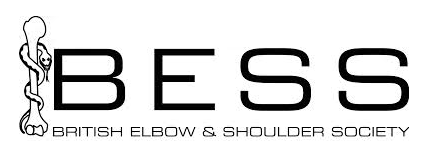Recovering from a shoulder dislocation
The “when can I drive?” question is one of the most common questions that I get asked all the time by my patients.
- When can I drive after I have broken my shoulder?
- When can I drive after shoulder surgery?
- When can I drive after I have dislocated my shoulder?
The honest answer is that there are no absolute rules or laws about this, but you need to be safe. Safe to protect yourself and the other people in the car with you and safe to protect other people on the road. I also tell my patients that they need to be confident that they will not knock me off my motorbike on a busy road!
I realise that may not be particularly helpful. So in this article, I will explain the factors involved in recovering from a shoulder dislocation so you can make a more informed decision about getting back on the road.
What is a shoulder dislocation?
Before you can begin to understand the factors involved in recovery, you need to know what happens in a shoulder dislocation. The term dislocation describes a situation in which the two articulating surfaces of a joint lose complete contact.
The shoulder joint is a ball and socket joint in which the ball is part of the upper arm bone (humerus). The socket is the glenoid bone, part of the shoulder blade, or scapula. In a shoulder dislocation, the humeral head moves out of the joint and loses contact with the glenoid surface.
A subluxation is when the humeral head moves out of the normal functioning range, but there is still some contact with the glenoid. To find out more about the different types of shoulder dislocations, click here (link to shoulder dislocation page on my website)
Why does the shoulder joint dislocate?
The shoulder joint is the most mobile joint in the body because the socket or glenoid is relatively flat compared to the ball or humeral head. Whilst this is an excellent advantage for a wide range of movement, the trade-off is potential instability, which is why the shoulder joint is the most easily dislocated joint in the body.
In most cases, the shoulder joint dislocates after a strong force, as in a rugby tackle. However, the shoulder can dislocate with very little or no pressure in some people.
There are three groups of shoulder dislocation; 1. traumatic shoulder dislocations, 2. atraumatic shoulder dislocations, 3. muscle patterning – read the complete information on each of these here on my website.
Which tissues get damaged in a shoulder dislocation?
Several soft tissue structures can be damaged in a shoulder dislocation. For example, the glenoid labrum is a ring of rubbery tissue that surrounds the glenoid bone. The labrum deepens the socket and is important for stability. The labrum is commonly torn during a dislocation. The rotator cuff tendons that insert onto the humeral head may also be stretched or torn. The bones of the shoulder joint can be broken. If any of these structures are damaged, they need time to heal. Otherwise, the shoulder can become recurrently unstable.
What should I do if I dislocate my shoulder?
When a shoulder dislocates, the priority is to put the shoulder joint back into its correct position as soon as possible. Sometimes the shoulder will pop back in itself, but more often than not, it will require some assistance. To find out more, read here
Once the shoulder is put back in place, the arm is supported in a sling to allow the damaged tissues to heal. Your shoulder will be more vulnerable to further dislocations if healing does not happen. Please feel free to contact me to book an appointment at this time so that we can organise more sophisticated imaging with an MRI scan to assess the tissue damage. Then, I can tell you if you need surgery to stabilise your shoulder.
You can find full details regarding surgical repairs for shoulder dislocations here on my website.
Are shoulder movements allowed whilst wearing a sling?
When your arm is in a sling, you can move your hand, wrist, and elbow as usual. In addition, you can shrug your shoulders up and down and do gentle neck stretches by moving your head from side to side, as your neck muscles will become stiff due to the sling. However, do not try and move your upper arm away from the body in the first couple of weeks. The excessive movement might separate the torn labrum from the glenoid and prevent healing.
What activities can I do with my arm in a sling?
You can hold light objects in your hand and bring them towards your face, so you can brush your teeth or feed yourself.
You can take your arm out of the sling to use a laptop keyboard. However, I strongly advise you to move the keyboard away from the table’s edge. Place your forearms on the table to support the weight of your arm. This way, it will not pull on your shoulder joint.
But when can I return to driving?
To drive safely, you need to be able to place both your arms comfortably on the steering wheel and turn it quickly in an emergency. If you drive a manual car, you will need to be able to move the gear stick and the hand brake. Whilst your arm is in a sling, you should not drive for several reasons.
- Sudden movements will be painful and may stop you from being able to turn the wheel properly, which could potentially cause an accident.
- Arm actions needed for driving will cause movements at the shoulder joint and stop the tissues from healing.
- Proprioception is also known as ‘joint position sense. Many of your driving skills have become automatic due to years of repetition. However, any automatic activity is partly reliant on good proprioception. After an injury, your proprioception changes and your automatic driving skills will have been affected. As a result, it will take time and practice to return to pre-injury levels.
- Hand to eye coordination is another crucial skill for driving. You need to constantly assess the changing conditions on the road and be able to respond quickly to avoid collisions. Reaction times can be significantly altered after an injury, especially if your arm is in a sling for a few weeks.
But what about driving an automatic car?
Many patients ask me whether they can drive an automatic car whilst wearing a sling on as there is no gear stick. However, I would still advise against this for the reasons explained above.
Is there anything else to take into account before I return to driving?
Other things to consider regarding when it is safe to return to driving include; insurance cover and DVLA guidance. Please check your insurance policy to see any restrictions regarding returning to driving after injury.
When can I drive after dislocating my shoulder?
Generally speaking, I would advise against driving whilst you are still wearing a sling. However, if it is your first dislocation, I would suggest two weeks is a reasonable time to allow the tissues to settle down.
However, be sensible and do not underestimate the impact that wearing a sling would have had on your shoulder muscles. They will be weaker, and your coordination will be affected.
When you go back to driving for the first time, plan a short drive on a familiar, quiet road. Do not plan a long journey on a busy motorway as your arm may fatigue quickly, and you will become tired.
Is there anything you can do to improve your shoulder function quickly?
It is essential to have at least one or two physiotherapy sessions after an injury. The physiotherapist will advise you on the function of your shoulder. They will assess muscle imbalances and give you exercises to correct them. Even if you are very fit and strong, physical therapy is still an essential part of your recovery and may prevent delayed recovery.
Get in touch today if you have an enquiry or would like to book your appointment. We are here to answer any questions that you have.
Ms Susan Alexander is a Consultant Orthopaedic Surgeon and President of the Independent Doctors Federation.
She specialises in all shoulder conditions, including frozen shoulder, rotator cuff tears, dislocations and arthritis. Based in London, she practises at Fortius Clinic and King Edward VII’s Hospital. Ms Alexander is highly experienced in minimally invasive (keyhole) shoulder surgery and is known for her meticulous, patient-centred and holistic approach.
She focuses on accurate diagnosis, bespoke treatment planning, and ongoing support throughout recovery. Learn more about Ms Susan Alexander here.









